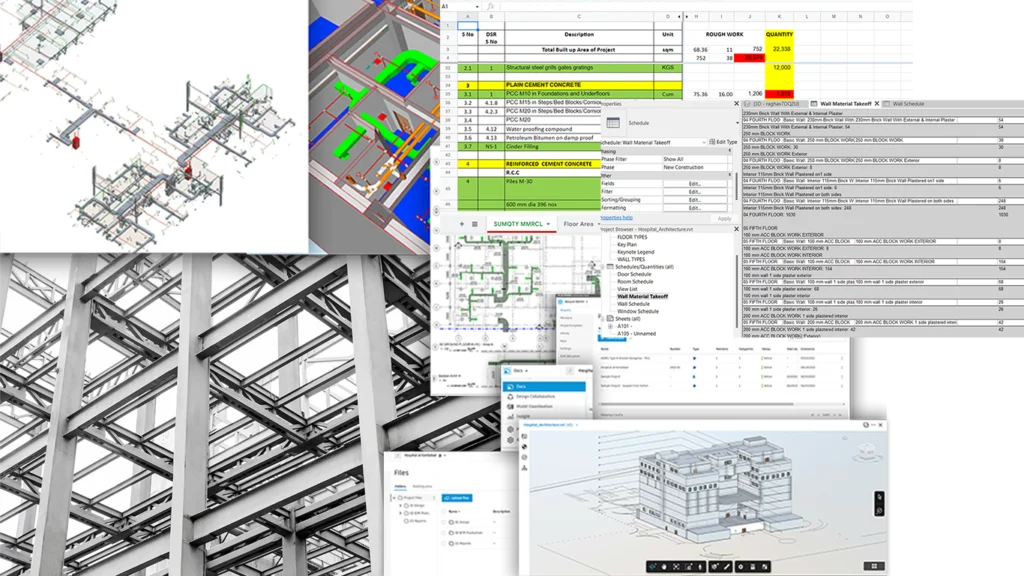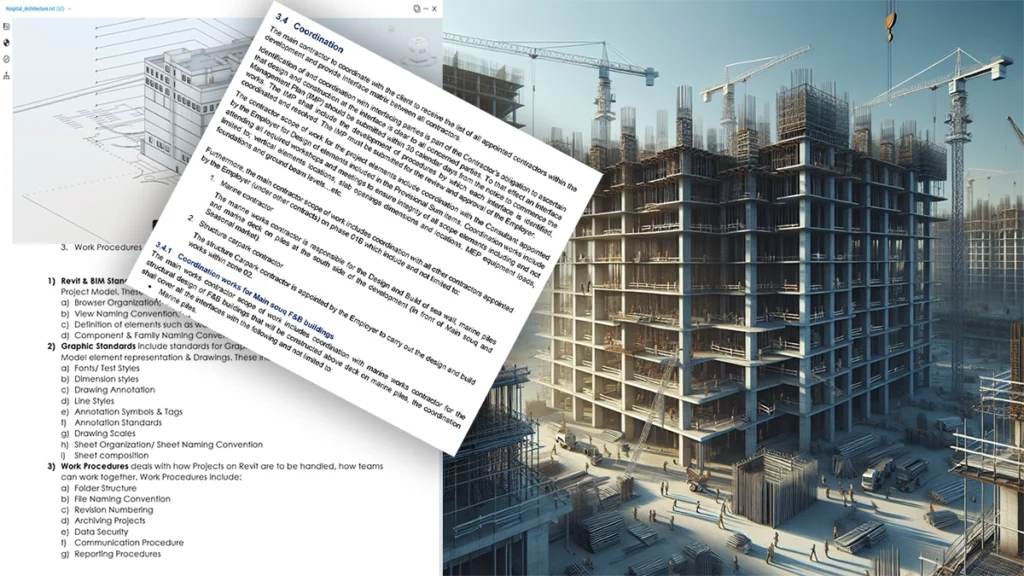Top Trends in BIM Outsourcing Today

Top Trends in BIM Outsourcing Today
The Top Trends in BIM Outsourcing Today are essential for driving project success and efficiency. Understanding the Top Trends in BIM Outsourcing Today can help organizations streamline their workflows.
The ongoing evolution of the Top Trends in BIM Outsourcing Today influences many aspects of project management. As we explore the Top Trends in BIM Outsourcing Today, we uncover new opportunities for innovation.
Integrating the Top Trends in BIM Outsourcing Today will provide a strategic advantage in competitive markets. Staying informed about the Top Trends in BIM Outsourcing Today is crucial for industry professionals.
Building Information Modeling (BIM) is revolutionizing the construction industry. It’s a game-changer that enhances efficiency, reduces costs, and improves project outcomes.
The Top Trends in BIM Outsourcing Today highlight the significance of collaboration and communication. Embracing the Top Trends in BIM Outsourcing Today can lead to better resource allocation and management.
But what about BIM outsourcing?
Examining the Top Trends in BIM Outsourcing Today reveals how technology reshapes industry practices.
To remain competitive, companies must adapt to the Top Trends in BIM Outsourcing Today.
Understanding the Top Trends in BIM Outsourcing Today can enhance project delivery and client satisfaction. Following the Top Trends in BIM Outsourcing Today encourages continuous improvement in project execution.
Incorporating the Top Trends in BIM Outsourcing Today is vital for sustainable construction practices. Each of the Top Trends in BIM Outsourcing Today plays a role in enhancing overall project performance.
Exploring the Top Trends in BIM Outsourcing Today opens doors to innovative solutions and strategies. This trend is growing, with companies seeking specialized BIM services from external providers. It’s a strategic move, allowing firms to leverage expertise and advanced technologies without the need for in-house resources.
To maximize benefits, understanding the Top Trends in BIM Outsourcing Today is essential for all stakeholders. In this article, we will examine the leading trends in BIM outsourcing as they stand today. We will explore how these trends are affecting the industry. We will also discuss their implications for professionals considering BIM outsourcing services. From the growth of cloud-based BIM solutions to the advent of BIM consulting, we will address every aspect.
From the rise of cloud-based BIM solutions to the emergence of BIM consulting, we’ll cover it all.
Stay tuned to discover how BIM outsourcing is transforming the way we plan, design, and construct our built environment.
Understanding BIM Outsourcing
BIM outsourcing involves delegating BIM tasks to external experts. These tasks include model creation, coordination, and analysis. Companies utilize BIM outsourcing for several reasons.
Firstly, it offers access to specialized skills and advanced technologies. This is vital in an industry driven by innovation and efficiency. It also allows companies to focus on their core competencies.
Moreover, BIM outsourcing helps manage fluctuating workloads. This flexibility is crucial for adapting to project demands. With a skilled outsourcing partner, companies can scale services as needed.
Lastly, BIM outsourcing can drive cost savings. It avoids the expense of maintaining a large in-house team. Instead, firms pay for services as required, optimizing budget allocations.
The Benefits of BIM Outsourcing
One major advantage of BIM outsourcing is enhanced efficiency. Expert providers streamline processes and improve project workflows. This results in smoother project management and execution.
Outsourcing also accelerates project timelines. Specialized firms can perform tasks faster due to their expertise. Speed is critical in construction projects, where delays can be costly.
Furthermore, outsourcing provides access to cutting-edge technologies. Many BIM service providers invest in the latest tools. This ensures that projects benefit from innovations like AI and VR.
Additionally, it supports global collaboration. Firms can work with experts worldwide, tapping into a diverse talent pool. This global approach fosters innovation and improves project outcomes.
Finally, BIM outsourcing offers flexibility. Firms can adjust the level of services according to project needs. This adaptability is beneficial as project scopes and complexities change.
Technological Integration: AI, VR, and IoT
One of the Top Trends in BIM Outsourcing today is that BIM is increasingly integrating with cutting-edge technologies like AI, VR, and IoT. These advancements offer transformative benefits to construction. AI enhances data analysis for better decision-making. It helps identify potential issues before they escalate.
Virtual reality (VR) provides immersive project visualization. This aids stakeholders in understanding design concepts. VR simulations improve communication and stakeholder engagement.
The future of construction relies heavily on the Top Trends in BIM Outsourcing Today.
IoT sensors gather real-time data from construction sites. This data informs BIM models, enhancing accuracy. It enables proactive maintenance and operational efficiency.
Together, these technologies improve project outcomes. They support smarter, data-driven construction processes. With technological integration, BIM becomes a powerful tool for innovation.
BIM and Sustainability
BIM plays a pivotal role in promoting sustainability. It optimizes resource use through precise planning. This minimizes material waste and enhances efficiency. Sustainable construction is no longer a niche approach.
BIM facilitates energy-efficient design. It analyzes and improves energy performance in buildings. This aligns with green building standards and certifications.
Moreover, BIM supports the use of sustainable materials. It aids in assessing the environmental impact of choices. This informs decision-making for eco-friendly construction.
BIM also enhances lifecycle management. It helps maintain sustainable practices through a building’s operational life. This ensures the longevity and sustainability of structures.
In conclusion, BIM fosters a sustainable approach in construction. It aligns the economic, environmental, and social goals.
The Rise of Cloud-Based BIM Solutions
Cloud-based BIM solutions are revolutionizing the industry. They enable seamless collaboration among project stakeholders. Access to real-time data becomes effortless and location-independent.
These solutions support scalability and flexibility. Teams can adjust to project needs without hardware constraints. This adaptability is crucial for complex, large-scale projects.
Data security remains a top priority in cloud BIM services. Providers implement robust encryption and security protocols. This ensures client information is well-protected.
Moreover, cloud solutions enhance data-sharing efficiency. Stakeholders can quickly access and update information. This speeds up decision-making processes significantly.
Ultimately, cloud technology streamlines BIM management. Projects benefit from improved communication and collaboration. The construction industry is witnessing a digital transformation.
Remote Work and Global Collaboration
BIM outsourcing has embraced remote work trends. Companies leverage global talent for diverse expertise. This approach drives innovation and creativity in projects.
Remote BIM teams facilitate round-the-clock productivity. Time zone differences can be an advantage here. Continuous project development is now more feasible.
Effective communication tools play a critical role. They bridge the gap between remote team members. Tools like video conferencing and instant messaging are invaluable.
Global collaboration opens up cost-effective opportunities. Outsourcing to countries with lower labor costs is common. This reduces project expenses without compromising quality.
Remote work has reshaped traditional construction workflows. It’s fostering a more interconnected and responsive industry. Companies are poised to reap significant benefits.
BIM Standardization and International Standards
BIM standardization is gaining traction globally. Countries are adopting uniform guidelines to streamline processes. This move fosters consistency in project execution.
International standards create common languages for construction. They eliminate barriers to collaboration across regions. Enhanced communication leads to more successful outcomes.
Standardization improves data exchange between platforms. It ensures compatibility, reducing integration issues. Thus, projects benefit from seamless information flow.
BIM standards also aid in risk mitigation. Predictable processes minimize errors and discrepancies. This assurance boosts stakeholder confidence and trust.
Moreover, these standards support innovation. They encourage the adoption of new technologies. The industry is prepared for continuous advancement.
BIM for Facility Management and Operations
BIM extends beyond construction into facility management. It provides comprehensive data for efficient building operations. This enhances maintenance planning and execution.
The use of BIM in operations optimizes resource allocation. Facilities can reduce waste and energy consumption. Sustainability goals are more attainable with BIM’s insights.
Data from BIM models support asset management. Facilities can track equipment lifecycle and maintenance needs. This leads to longer asset life and reduced costs.
BIM also facilitates space management within buildings. It helps in planning and reconfiguring spaces efficiently. Occupancy rates and space utilization improve significantly.
Overall, BIM streamlines facilities management processes. It provides actionable insights for decision-making. The benefits span cost savings, efficiency, and sustainability.
The Emergence of BIM Consulting
The demand for BIM consulting is rising quickly. These services provide expert guidance on using BIM effectively. They help projects stay on track and within budget.
BIM consultants offer insights into best practices. They equip teams with the skills needed for success. This expertise is invaluable for complex projects.
Consultants also assist in technology integration. They ensure the smooth adoption of BIM tools and techniques. This minimizes disruptions during implementation.
Furthermore, BIM consulting enhances project planning. It provides accurate forecasts and timelines. This leads to better project management and execution.
Ultimately, these services add value through strategic advice. Clients benefit from informed decisions and innovative solutions. This sets the stage for project excellence.
Selecting the Right BIM Outsourcing Partner
Choosing a BIM outsourcing partner requires careful consideration. Start by assessing their portfolio and experience. A proven track record is essential.
Communication is key in any partnership. Ensure the partner understands your project’s specific needs. Clear expectations prevent misunderstandings later.
Evaluate the scalability of their services. Your partner should grow with your project’s demands. Flexibility is critical for long-term collaboration.
Check their technology and software compatibility. Interoperability ensures seamless collaboration. It allows for smooth data exchange between teams.
Finally, consider their commitment to innovation. A forward-thinking partner embraces new developments. This keeps your project at the forefront of the industry.
Conclusion
BIM outsourcing is set to transform the construction landscape. It brings efficiency and innovation to projects of all sizes. Companies embracing this trend gain a competitive edge.
As technology evolves, BIM outsourcing will grow in significance. Industry leaders will seek partners who drive change. Together, they will unlock new possibilities for the built environment.
You may be interested in our related post: How to Choose a BIM Outsourcing Partner


